Modeling predator (Mobula mobular) and prey (Nyctiphanes simplex) distribution in response to ENSO dynamics
June 2025
Nerea Lezama-Ochoa, Nima Farchadi, Hilario Murua, Melissa R. Cronin, Kelly M. Zilliacus, Marta D. Palacios, Danial G. Palance, Abel Trejo-Ramírez, Mercedes Pozo Buil, Bertha E. Lavaniegos, Jaime Gómez-Gutiérrez, Donald A. Croll & Elliott L. Hazen
Keywords: Spinetail Devil Ray • Species Distribution Models • Habitat Suitability • Conservation • Schoener’s D index • El Niño-Southern Oscillation • La Niña
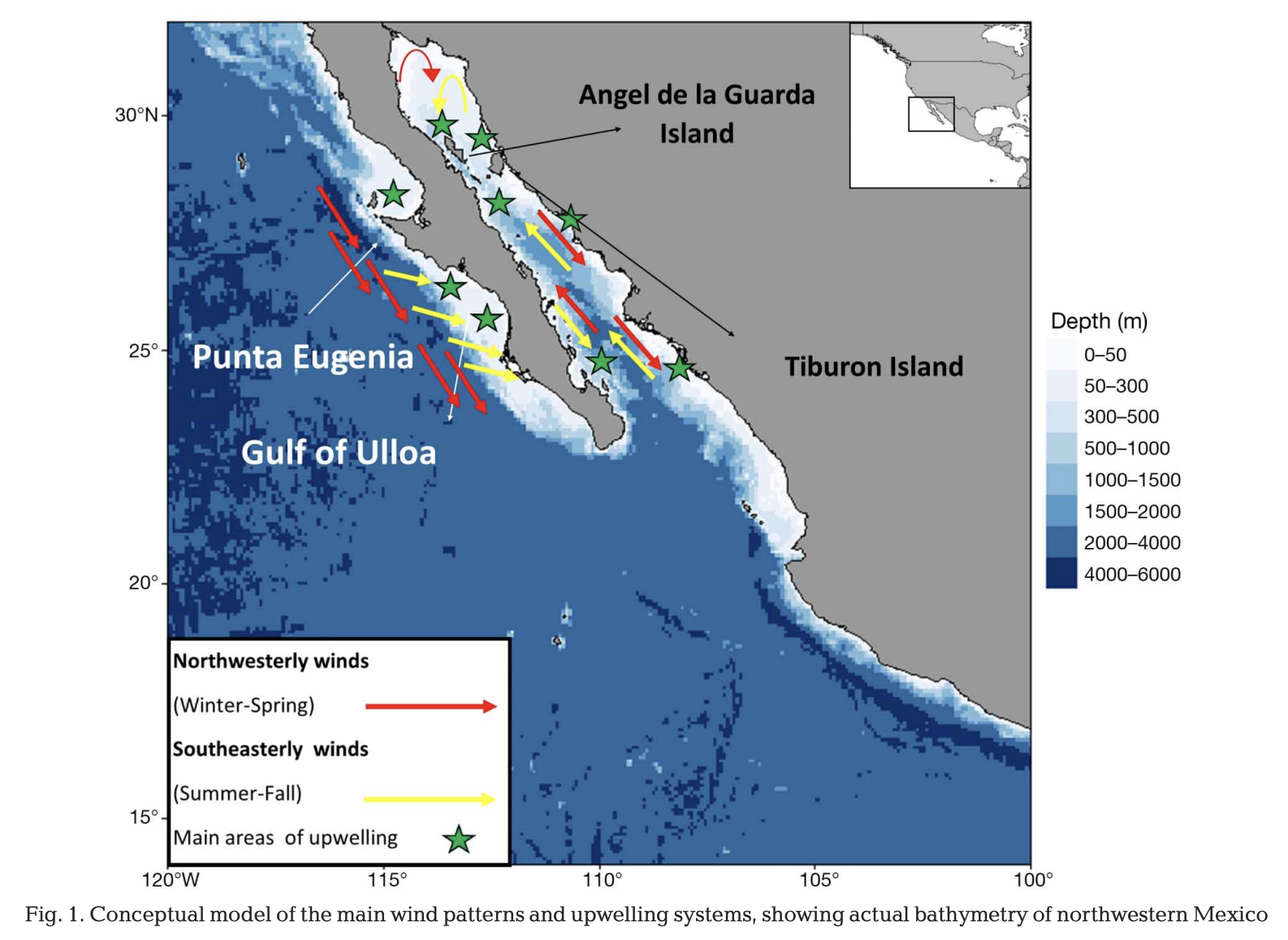
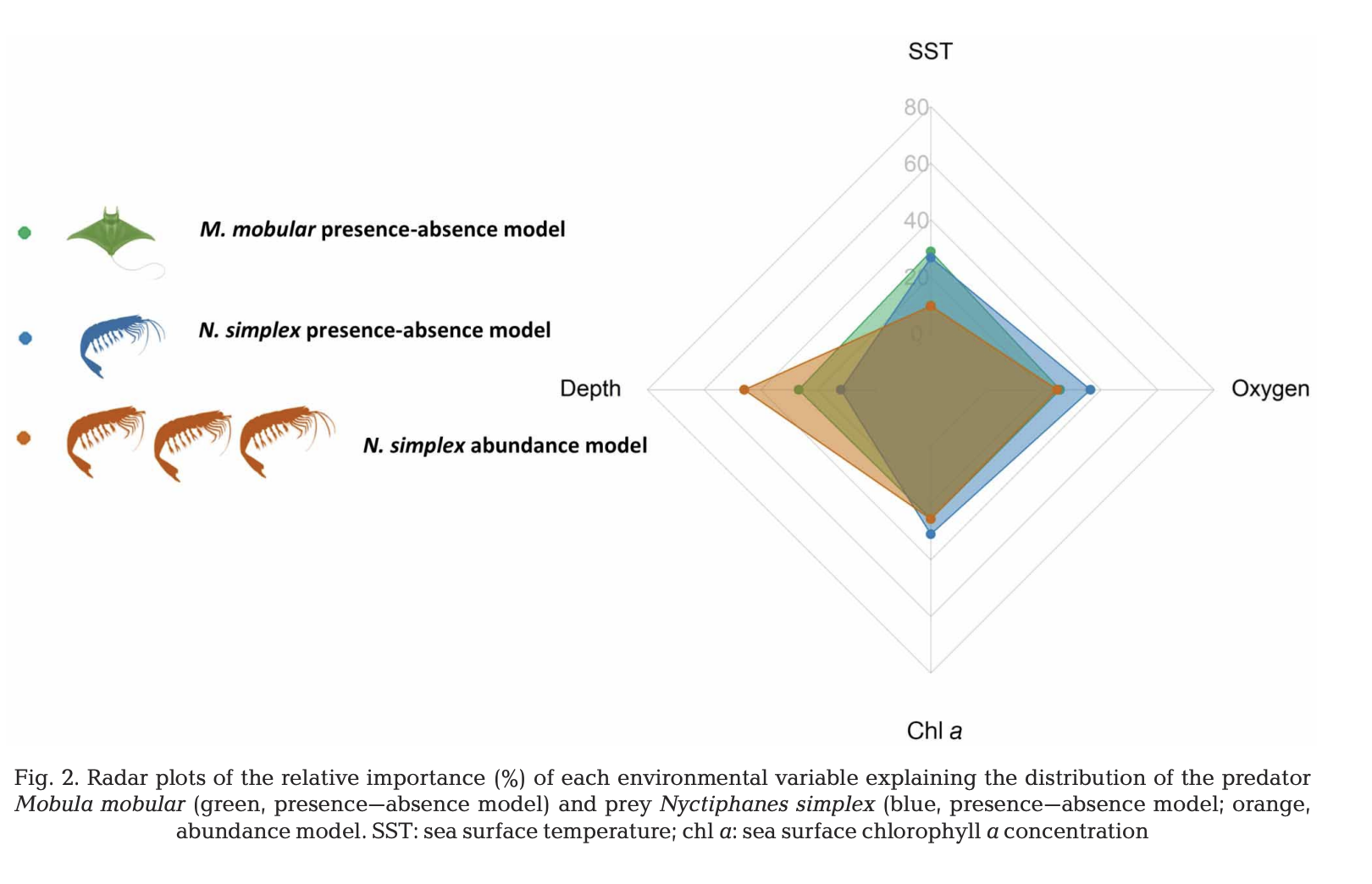
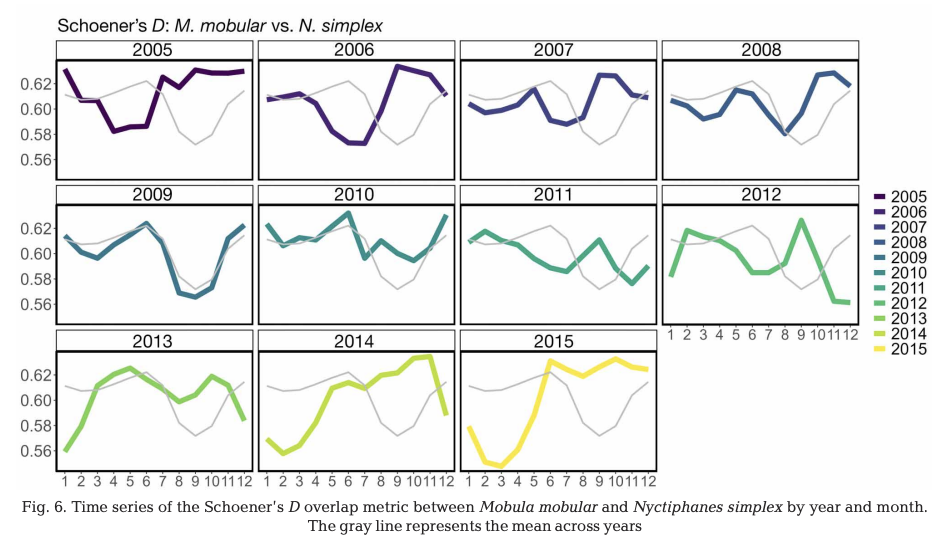
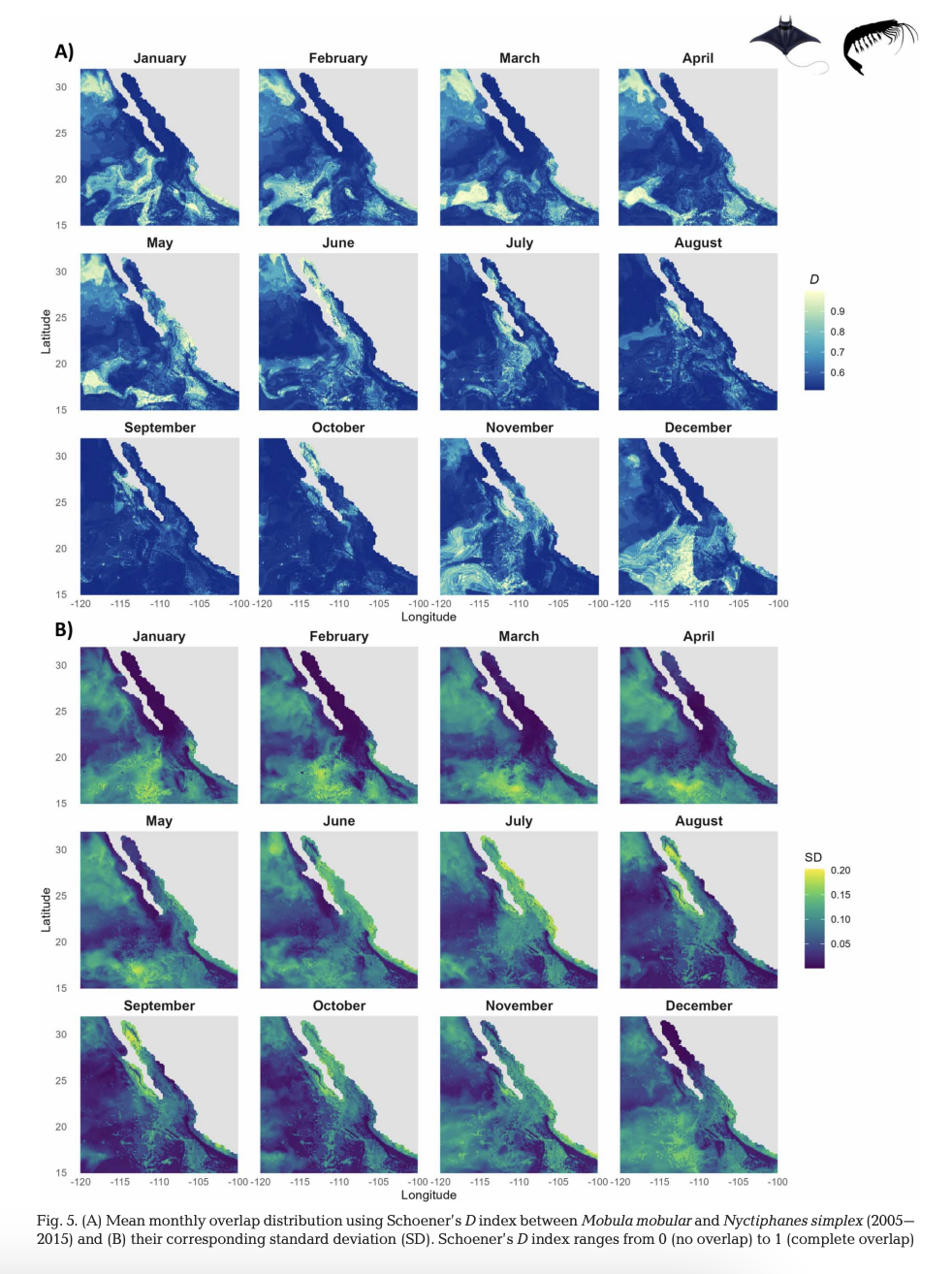
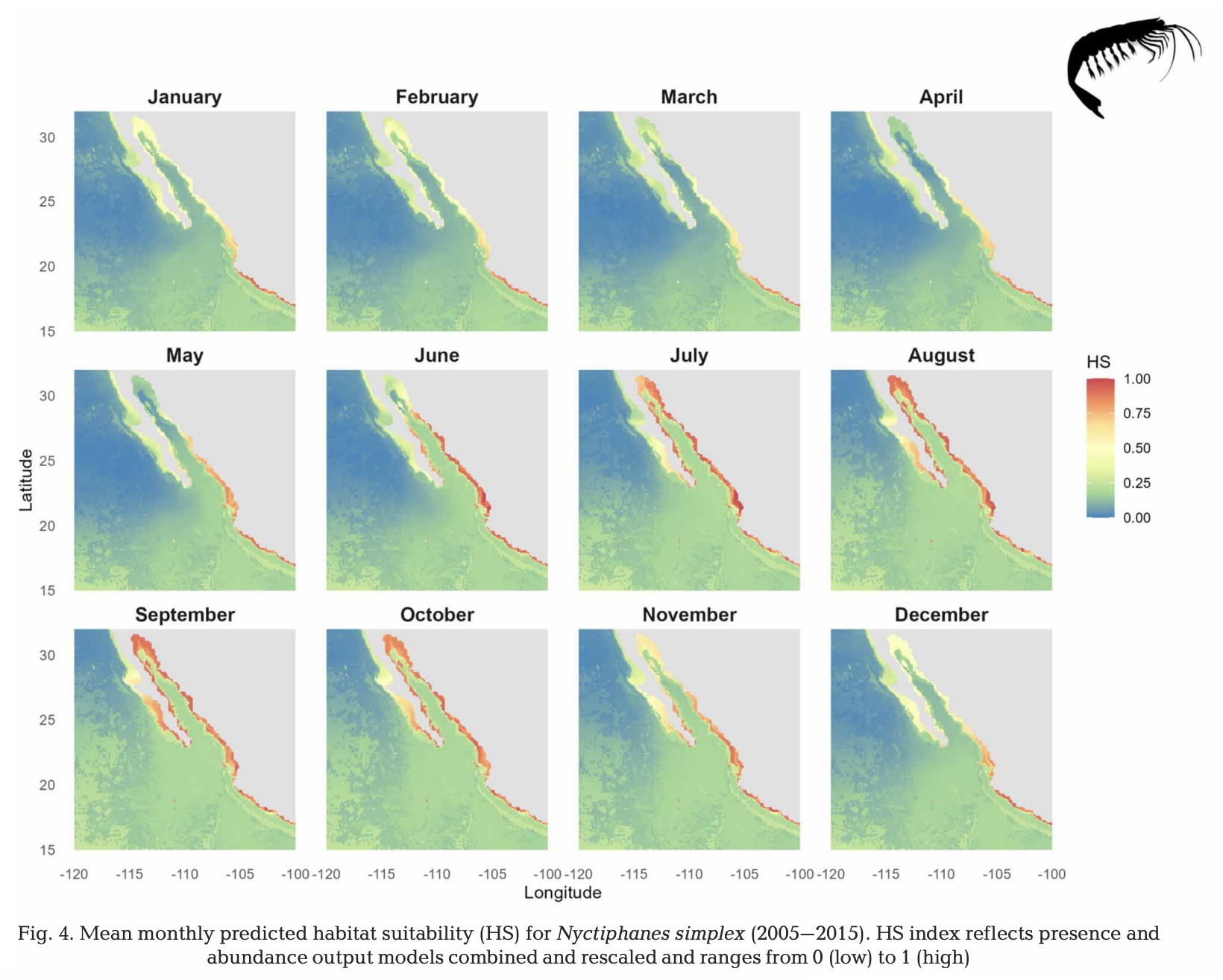
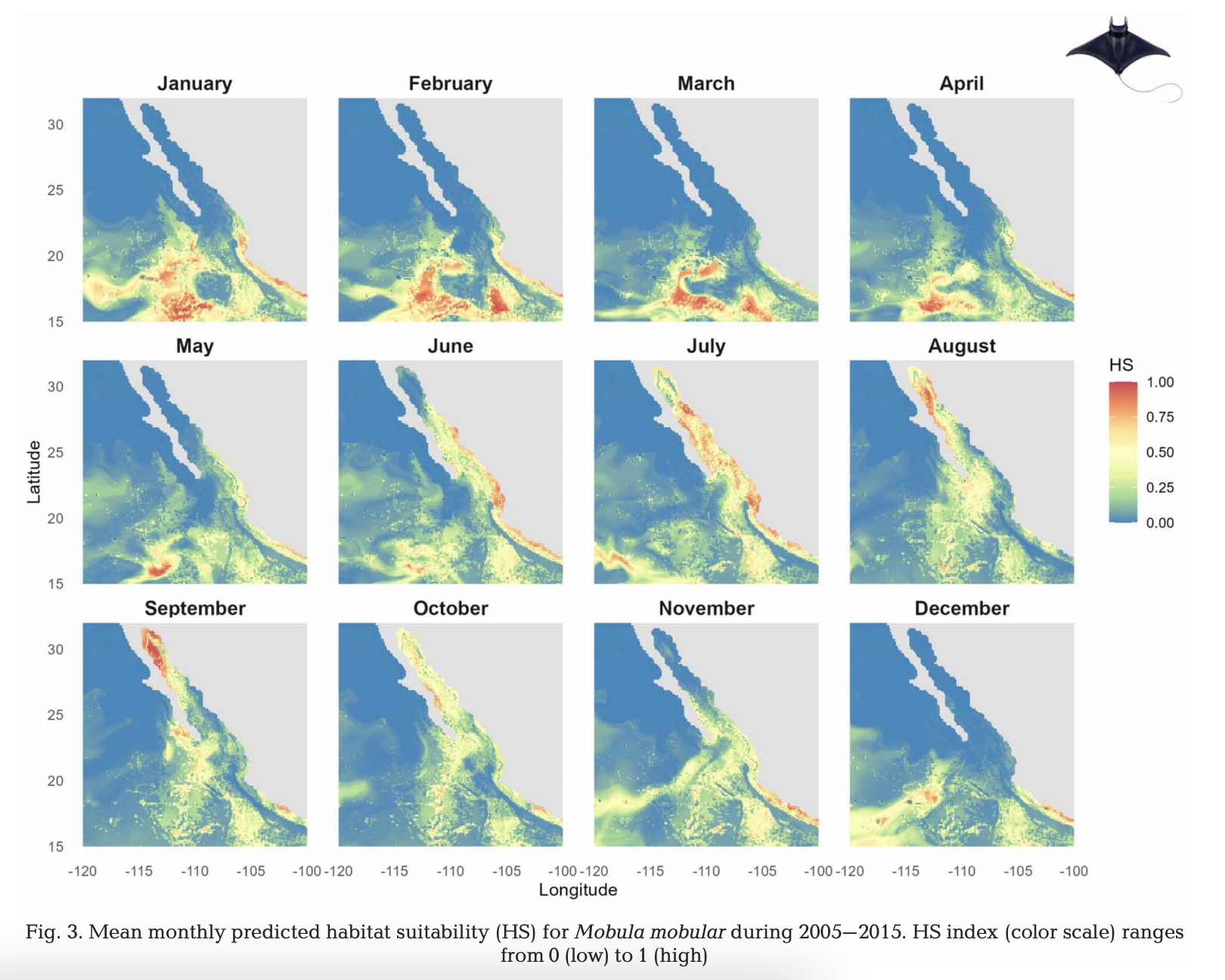
Summary: The spinetail devil ray (Mobula mobular) is a data-poor species of global concern, closely linked to dynamic oceanographic conditions. Using boosted regression tree models, this study examined predator–prey habitat suitability and overlap with Nyctiphanes simplex - a species of euphausiid, commonly known as krill - in north-western Mexico (2005–2015). Results show El Niño–Southern Oscillation (ENSO)-driven shifts in coastal distribution patterns, with strong seasonal overlap. These findings provide vital insight to inform conservation strategies for M. mobular under changing climate conditions.
Abstract
“The spinetail devil ray Mobula mobular is a data-poor species of global conservation concern with distribution and movement patterns that are linked to dynamic oceanographic processes. While some conservation measures to protect this species from diverse human threats have been implemented, the potential impacts of climate variability on this species and its main prey Nyctiphanes simplex have not yet been fully considered. We used boosted regression tree models to predict the habitat suitability and niche overlap (Schoener’s D index) of predator and prey in northwestern Mexico during 2005-2015. This period included anomalously warm (El Niño) and cold (La Niña) years, allowing us to predict habitat preferences for both species under contrasting ENSO environmental conditions. Our model predicts that M. mobular and N. simplex distributions are associated with productive waters along the coast and with considerably less probability offshore of northwest Mexico. We found strong spatial relationships between the habitat suitability of M. mobular and its prey, with high distributional overlap inside the Gulf of California during the warm season. During the 2010 La Niña event, environmental conditions resulted in particularly high habitat suitability and overlap for both species inside the Gulf during August and September, while during the 2015 El Niño event, habitat suitability and overlap were higher on the west coast of the Gulf of California. We demonstrate how predicting distribution patterns of data-poor species provides vital information for marine resource managers to develop effective protection strategies for species of conservation concern, like M. mobular.”
Author Affiliations
Institute of Marine Sciences, University of California Santa Cruz
Mobula Conservation
San Diego State University
International Seafood Sustainability Foundation
Duke University
The Manta Trust
Centro de Investigación Científica y de Educación Superior de Ensenada
Centro Interdisciplinario de Ciencias Marinas, Instituto Politécnico Nacional
Contribution towards the Manta Trust's Strategic Plan
Goal 2: Strategic Objective 2.2 - Regulations and effective enforcement exist to reduce manta and devil ray capture and bycatch mortality in geographical focus areas.
Goal 3: Strategic Objective 3.2 - Key manta and devil ray aggregation sites in the regions where we work fall within protected areas that are effectively managed.
Goal 3: Strategic Objective 3.4 - The environmental drivers on manta ray populations are better understood to help determine the impact of the climate crisis and inform conservation measures.

